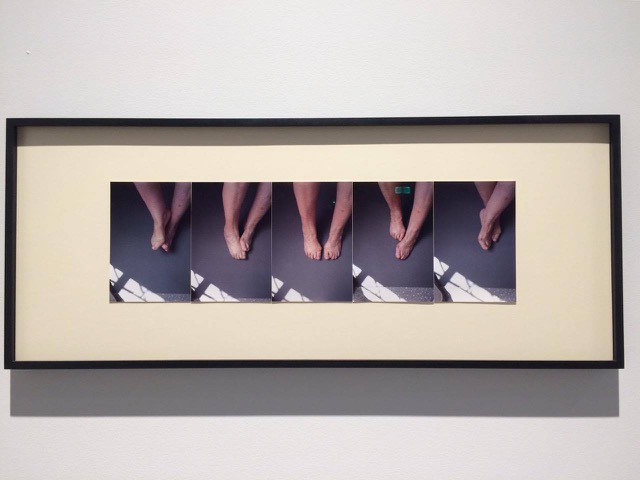Geta Brătescu

Within Venice’s Giardini, Romania is represented by a complex and extensive body of work by Geta Brătescu, born in 1926, an artist who has been integral to the contemporary Romanian art scene since the 1960s. Key to Magda Radu’s curation of the Pavilion are notions of ‘the studio’ alongside ‘reflections on female subjectivity’. These at first seem to be divergent categories to pair together, as one is apparently based more on process and the other an evocative concept. However, the group of works on show intertwine seamlessly. Female subjectivity is found to be essential for much of the artists thinking, apt in her coming to the fore alongside the burgeoning beginnings of second-wave feminism. Furthermore, as one explores the intimate and diverse collections of mixed media, drawing and photography, there is a sense that this could in fact be the artists studio, artworks pinned onto the wall as part of her thought process.
Brătescu’s performance Nu Violenței! [No to Violence] is documented through an installation alongside a series of photographs to conjure up the original 1974 happening. The artist is seen huddling in a crouched position, vulnerable beneath her fierce assemblages of wooden limbs, appearing as if they might become extra appendages to her body, whether wings, weapons or crutches. This brings to mind Rebecca Horn’s own performative interventions with her body, created at a similar time when body art was key as a method to record the experiences of the female. Yet Brătescu’s piece is also an exploration of space, of the studio, and how her body fits into it.
The intimacy Brătescu experiences with her own body can be seen in Mâini [Hands], a series of twenty appropriately sized drawings, some on partially ripped pieces of paper as if drawn as an afterthought, others unfinished, as if part of her hand or the face that rests on it has melted away. These are her body as one fragment of a whole. Legs in the Morning is a colour photographic polyptych of the artist’s bare legs, with the morning light blazing through the frame of a window. There is a suggestion of fragility in these self-conscious limbs, as the toes bend and curl around one another, as if uncomfortable that they are being watched. Perhaps, taken at the age of 86, this series is a meditation on age, visible in the wrinkles of her skin.
The Romanian artist’s work draws the viewer into each small page, the various series reflecting one theme or narrative becoming incredibly involving. It is a sensitive, introspective exhibition.
GB.

